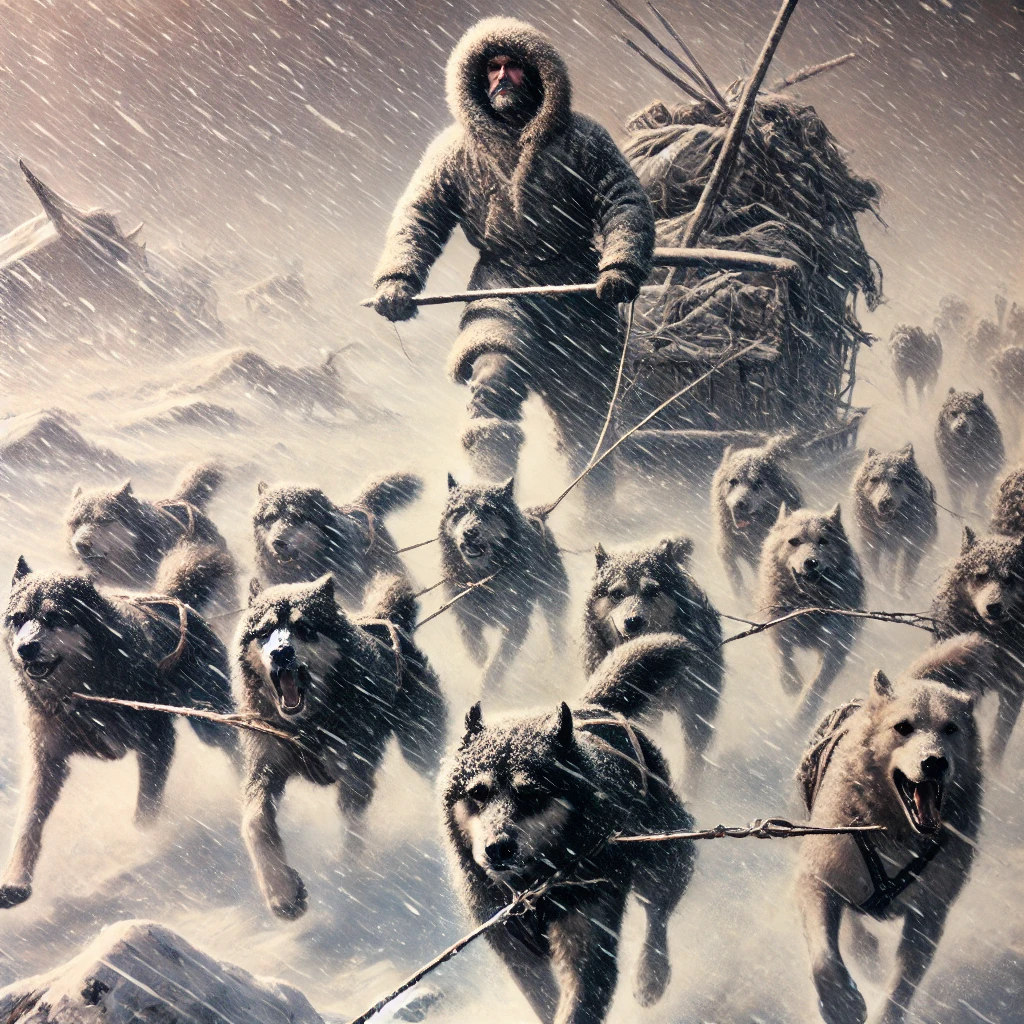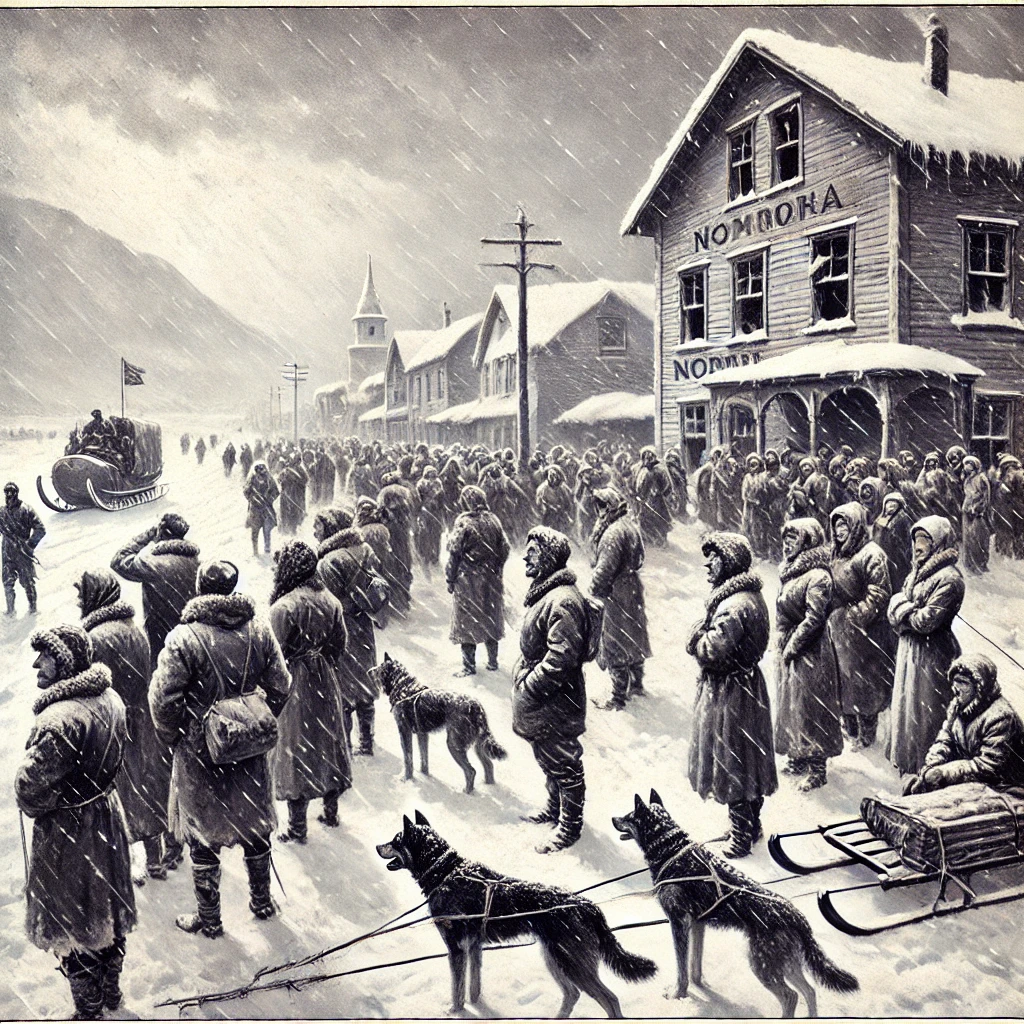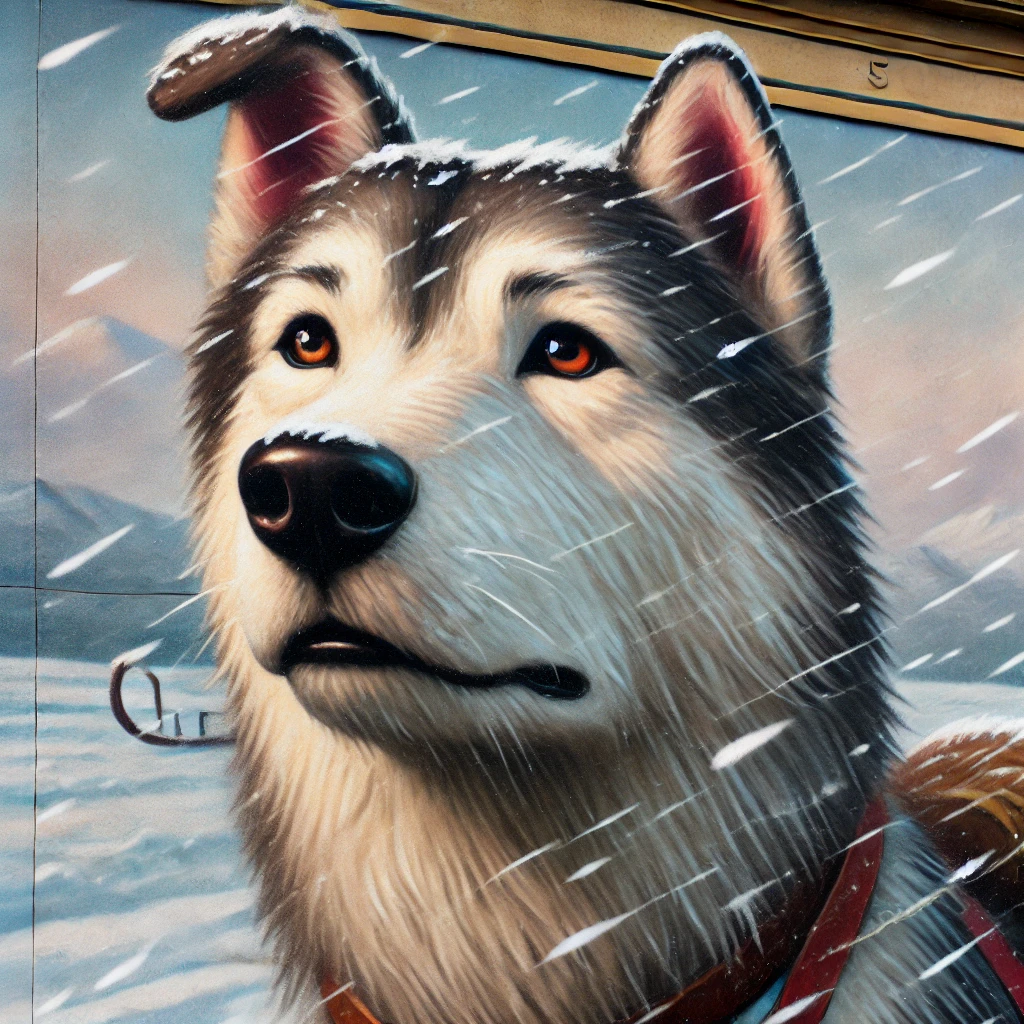On February 2, 1925, Balto, the Siberian Husky, led his sled dog team through treacherous conditions to deliver diphtheria antitoxin to Nome, Alaska, completing the heroic serum run. The town was facing a deadly diphtheria outbreak, and without immediate medical intervention, many lives—especially those of children—were at risk. With no other viable means of transportation in the middle of an Alaskan winter, a relay of sled dog teams was assembled to transport the much-needed serum over nearly 700 miles of icy terrain.

Braving blizzards, extreme temperatures, and treacherous trails, more than 20 mushers and their teams worked together in an effort that became known as the “Great Race of Mercy.” Balto and his musher, Gunnar Kaasen, ran the final stretch, pushing through near whiteout conditions to reach Nome just in time. Their successful delivery not only saved lives but also became a legendary moment in history.
A Desperate Fight Against Time and Nature
The outbreak in Nome had placed the town in a dire situation. The region’s only doctor, Dr. Curtis Welch, had already seen several cases of diphtheria and knew it could quickly turn into an epidemic. The town’s limited supply of antitoxin had expired, and with the nearest viable medicine over 600 miles away in Anchorage, quick action was essential.
Winter conditions made alternative transportation impossible. Planes were grounded due to extreme cold, and ships couldn’t navigate the ice-covered waters. Sled dogs were the only option. A group of mushers volunteered to create a relay system, each team running a section of the journey to carry the serum across the unforgiving Alaskan wilderness. The extreme cold—dropping as low as -60°F—made the mission nearly impossible, yet the determination of both humans and dogs ensured its success.

Balto’s Heroic Final Run
While all the sled dog teams played a critical role in the serum’s delivery, Balto became the face of the mission due to his leadership during the final leg. Gunnar Kaasen and his team encountered fierce winds and almost complete darkness as they navigated the last 53 miles to Nome. Despite the harsh conditions, Balto led his team with unwavering determination, ensuring the serum arrived safely.
Upon reaching Nome, Balto and his team were hailed as heroes. Their incredible endurance and bravery symbolized the collective efforts of all the mushers and sled dogs involved in the mission. The successful completion of the serum run saved countless lives and captured the world’s attention, highlighting the importance of sled dog teams in Arctic survival.
A Lasting Legacy of Courage

The legacy of the Serum Run continues to inspire people today. Later in 1925, a statue of Balto was erected in Central Park, New York City, honoring the sled dogs who made the life-saving journey possible. The inscription on the statue reads: “Endurance · Fidelity · Intelligence”—a tribute to the remarkable courage displayed during the mission.
The event also helped shape modern emergency medical transportation. Today’s rapid-response systems, including air medical services, owe much to the lessons learned from the serum run. Additionally, the Iditarod Trail Sled Dog Race, established in 1973, commemorates the heroism of the mushers and their teams, ensuring that the history of this incredible event is never forgotten.
Nearly a century later, Balto’s story remains a testament to bravery, teamwork, and perseverance. The Great Race of Mercy serves as a powerful reminder that even in the most challenging circumstances, determination and cooperation can overcome the odds and save lives.
